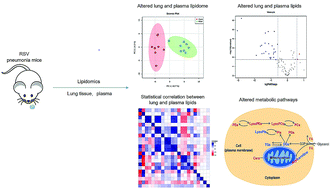Cardiolipin, an important component of the mitochondrial membranes in heart cells, can lead to lung damage, US researchers have shown. Their results in a mouse model of pneumonia are published in the journal Nature Medicine. The discovery has the potential to contribute to the development of new methods of pneumonia therapy.
Pneumonia is the leading cause of death from infections, although the exact mechanism by which bacteria infect the lungs is unknown. Rama Mallampalli and colleagues from the University of Pittsburgh showed that cardiolipin levels are elevated in patients with pneumonia. Cardiolipin is diphosphatidylglycerol, a negatively charged glycerolphospholipid found in the inner membrane of the mitochondria.
The authors showed that a phospholipid transporter, a molecule called ATP8b1, binds cardiolipin and carries lipids from the membrane into the cell. In mice with the mutant ATP8b1 transporter, cardiolipin levels are increased in the lung fluid – similar to those in patients with pneumonia. According to the researchers, since mice with the mutant transporter are very susceptible to bacterial pneumonia, it can be concluded that cardiolipin plays an important role in the development of the disease. (PAP)










